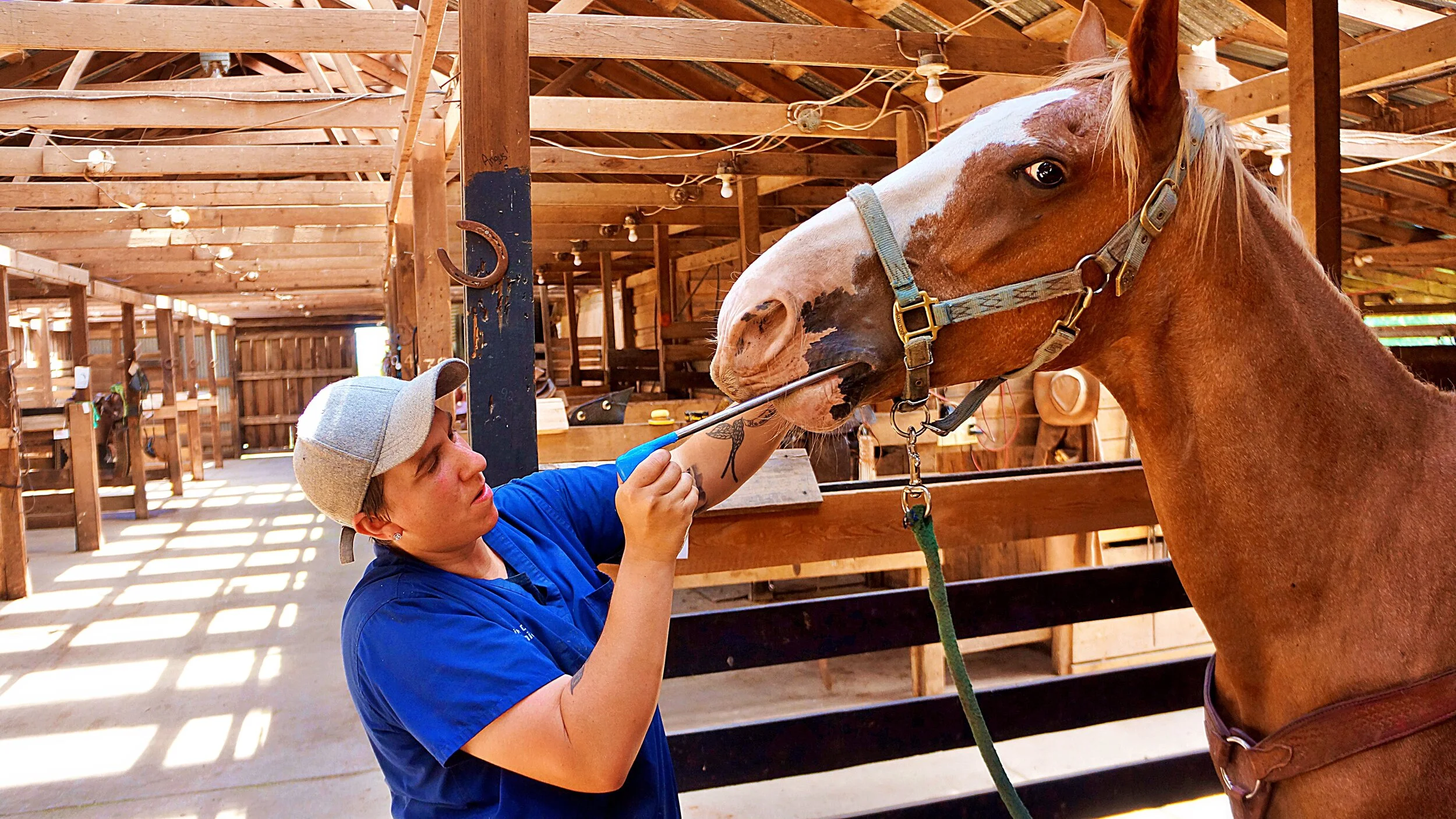Frequently Asked Questions
Hi there! These are important questions my clients have asked over the years and I wanted to enclose them for future clients who are interested in Dobson Dentistry Service and may have similar questions. I think it’s important for horse owners to ask these important questions as there can be overwelming answers out there. These answers are strictly from what my experiences have been and what I practice and have practiced for the last 10 years doing equine dentistry and working with horses. Various other practices may have different answers.
1.) Do you sedate?
Answer: Legally, equine dental technicians are not allowed to sedate horses. A veterinarian must sedate or the owner of the horse can sedate. The answer to this question is no, I do NOT sedate horses.
2.) What if you can’t float my horse’s mouth because of their behavior?
Answer: In the event I can’t float your horse due to behavior, we end everything on a high note with your horse and we reschedule for a time you would be able to have sedation on hand to then sedate your horse on the next appointment date. More often than not some horses that have had to be sedated in the past, when I have worked with them with my method, they ended up getting through the float without needing sedation at all and the float was successful.
3.) If you don’t use a speculum most of the time how can you reach the back teeth?
Answer: Occasionally a speculum is used in order to correct certain malocclusions. Speculums should only be used when a horse is sedated because the horse’s jaw muscles need to remain relaxed. However, for my practice I choose to not use a speculum unless its absolutely necessary and the horse is sedated. Due to experiences I have seen where it has brought significant harm to a horse’s Jaw function and compromised a horse’s Temporomandibular Joint (TMJ) I choose to use a speculum on a case by case basis. Most horses willingly open to the angle they are physically comfortable when I enter their mouth with my tools. This way I am able to float the horse’s back molars. Some horses may have tightness with their TMJ as they don’t often have a need to open wider than the angle they use when they chew their food. In that case, I will use my hand to enter the mouth and tickle the roof of the horse’s mouth (similar to when placing a bit inside the horse’s mouth) and use it to prop open their mouth for the amount of time I need in order to achieve reaching the back molars and shaping them for proper occlusion (connection).
4.) How old should I start floating my young horse?
Answer: I recommend to start having light floats given between 1.5 years and 2 years old. This way the young horse can understand this is a service they will receive as they grow and can get comfortable with the procedure and hopefully will not need to be sedated when introduced to floating.
5.) What is Floating?
Answer: Floating is the procedure where sharp points and hooks are removed from the horse’s mouth due to their offset jaw angles. Due to offset Jaw angles horses grow points on the buckle (upper teeth outer side) of their mouth and Lingual (Lower teeth inner side) of their mouth. These points that develop can become extremely uncomfortable to the horse causing the horse to not chew their food efficiently and can become extremely uncomfortable having a bit for riding. After the points and hooks are removed by floating the next goal is to make sure the length of the teeth are in good standing so that more teeth are in occlusion (connection) with each other so that food grinding is efficient.

